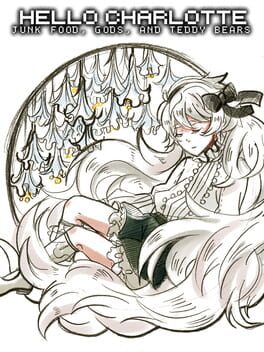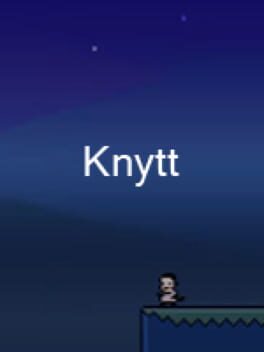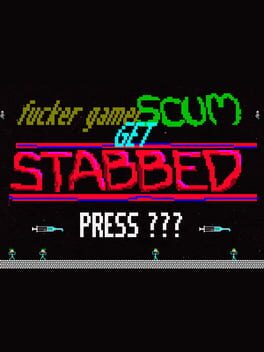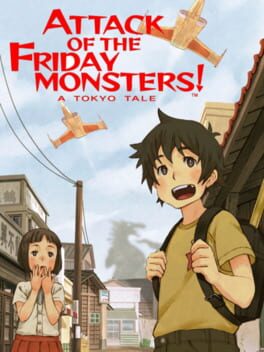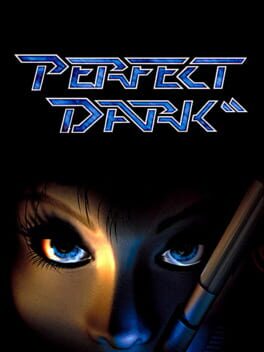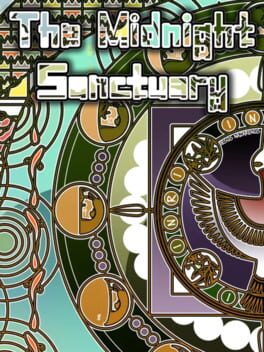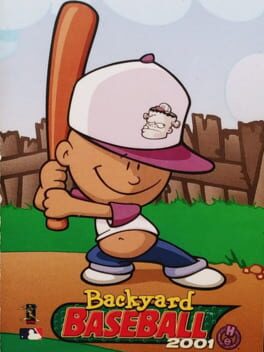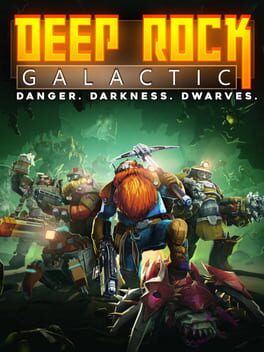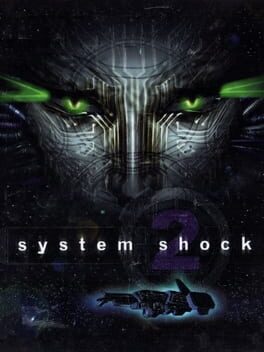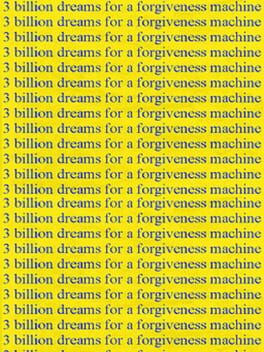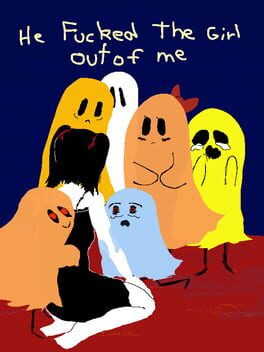ludzu
519 Reviews liked by ludzu
I’m glad that people connected with Charlotte later on, but I miss something that got lost since this first game. May sound typical for this kind of RPG maker games, but to me the game is entirely about the peculiar and imaginative perception of the world from Charlotte’s view in videogame language.
If I’m allowed to make a guess, I’m pretty sure that most people who grew up with videogames being quite present in their lives have dreamt in videogame terms (specially as children, but also as adults), even daydreaming about them. Something similar must have happened with cinema and TV (camera angles, cuts and such being present in dreams and even when recalling memories) and Hello Charlotte has a lot of this new influence on perception. Her imaginary friend is someone never present that may seem (and may be) a fourth wall breaking reference to the player or just her thinking that she’s a videogame character. The multiple deaths act more as what ifs, what if the world ended if I touch this, what if the scary bear impales me. It may seem insensitive to think about these images, but to me it’s kind of liberating from the perspective of Charlotte, just her letting her mind express herself and experiment knowing that a bad end can always be rewinded.
What’s interesting about the mixed perception between videogames and real life is the point that I miss in the next two games. This perception happens (partially) as a way to connect very designed, even standardized simple rules and the bigger complexities of the real world. Think about little kids asking about “who are the good and bad guys” like if everything was a cartoon, not out of bad intent, but to try and grasp something unknown to them on their terms. The first Hello Charlotte is a quite well achived abstract adventure in the conventional sense with a lot of personal quirks in its presentation that lets glances at Charlotte’s deepest worries. If I’m allowed to take a picky example, Episode 2 represents Charlotte social troubles in school through RPG Maker standard combats. The first game is the imagination running free while still being inevitably attached to who Charlotte is and her life, the second one feels like a failed attempt to represent social anxiety in those terms, ignoring both the way that is really perceived and how the imagination tries to make some sense out of it.
My biggest shame is that the dreamy yet way less abstract influence in the next games does come occasionally incredibly close to my dreamy perceptions, apart from the cinema and videogames presence. The mix between everyday places with something always off, but something that seems normal unless you stop to think about it, and the meaning that such small changes carry (like everything about the school structure, for instance think about how the way to it requires the students to take a mortal drop into a mattress, a process that makes sense but only under a specific non sensical logic). In some way, a perfect match about videogames' constant failures at replicating reality by nature and yet the convincing sense that their obvious fakeness brings. I appreciate the attempts to try to have more focused thematic ideas later on, but while I never found my footing in those, I always yearned for that more natural expression of intuition from the subconscious. Charlotte lets herself see without noticing while dreaming of being herself.
If I’m allowed to make a guess, I’m pretty sure that most people who grew up with videogames being quite present in their lives have dreamt in videogame terms (specially as children, but also as adults), even daydreaming about them. Something similar must have happened with cinema and TV (camera angles, cuts and such being present in dreams and even when recalling memories) and Hello Charlotte has a lot of this new influence on perception. Her imaginary friend is someone never present that may seem (and may be) a fourth wall breaking reference to the player or just her thinking that she’s a videogame character. The multiple deaths act more as what ifs, what if the world ended if I touch this, what if the scary bear impales me. It may seem insensitive to think about these images, but to me it’s kind of liberating from the perspective of Charlotte, just her letting her mind express herself and experiment knowing that a bad end can always be rewinded.
What’s interesting about the mixed perception between videogames and real life is the point that I miss in the next two games. This perception happens (partially) as a way to connect very designed, even standardized simple rules and the bigger complexities of the real world. Think about little kids asking about “who are the good and bad guys” like if everything was a cartoon, not out of bad intent, but to try and grasp something unknown to them on their terms. The first Hello Charlotte is a quite well achived abstract adventure in the conventional sense with a lot of personal quirks in its presentation that lets glances at Charlotte’s deepest worries. If I’m allowed to take a picky example, Episode 2 represents Charlotte social troubles in school through RPG Maker standard combats. The first game is the imagination running free while still being inevitably attached to who Charlotte is and her life, the second one feels like a failed attempt to represent social anxiety in those terms, ignoring both the way that is really perceived and how the imagination tries to make some sense out of it.
My biggest shame is that the dreamy yet way less abstract influence in the next games does come occasionally incredibly close to my dreamy perceptions, apart from the cinema and videogames presence. The mix between everyday places with something always off, but something that seems normal unless you stop to think about it, and the meaning that such small changes carry (like everything about the school structure, for instance think about how the way to it requires the students to take a mortal drop into a mattress, a process that makes sense but only under a specific non sensical logic). In some way, a perfect match about videogames' constant failures at replicating reality by nature and yet the convincing sense that their obvious fakeness brings. I appreciate the attempts to try to have more focused thematic ideas later on, but while I never found my footing in those, I always yearned for that more natural expression of intuition from the subconscious. Charlotte lets herself see without noticing while dreaming of being herself.
loved how much etherane loves kurt vonnegut. not only the writing is reminiscent, but some concepts of deity and existentialism that vonnegut works with can be seen here! of course is the first in a trilogy and it feels very introductory so i can't go deeper into themes. i believe that it is probably a type of work that it gets better as its world is contextualized in later installments. anyway! i really loved the writing and the characters seem very interesting, felix is a beloved already and charlotte is very cute! also the soundtrack really sets up the traggic/melancholic mood throught the game. the contextualization of the playable character as a "puppet" and the player as "the puppeter" is genuinely genius and makes you think that videogames are perhaps more close to theater than cinema, idk. anyway. just thoughts!
Knytt
2006
It might be easiest to think of the original Knytt as the Yume Nikki of 2D platformers. You play as a weird little creature that got abducted by a friendly alien, only to crash land upon a foreign planet and be tasked with collecting the fallen parts of the spaceship to return home. All you’ve got at your disposal is the classic single jump and wall cling/climb, as well as a searchlight that will point you towards the closest spaceship part. The collected parts won’t upgrade your toolkit in any fashion (and as such I find it misleading to mark this as a traditional Metroidvania) and there isn’t a single word of dialogue spoken or written in the landscape; as a result, this is a platformer dedicated to exploration as its own reward.
There’s no map in Knytt, so you’d think that it would be quite easy to get lost and stumble about with little direction. However, Knytt provides enough environmental context if you pay close attention and the searchlight will keep you moving through the sprawl with ease. While the game is less focused on mechanical difficulty, that doesn’t necessarily mean it’s trivial: any liquid as well as particular invincible enemies (marked for danger when your character glows red upon approaching) can still end your life and send you back to the nearest checkpoint (though fortunately the quick respawn never feels frustrating). Having said that, the act of jumping and climbing about this unfamiliar yet vibrantly colored landscape, aided greatly by the tight controls, is more than enough to keep the player occupied while sporadic ambient tunes chirp in the background accompanied by the satisfying plodding of your footsteps.
As a result, the difficulty stems not from execution tests, but rather from spatial recognition and keeping the big picture in mind when figuring out exactly how sections of the overworld link to one another to maintain progression. A lot of players get frustrated when they keep running into dead ends, impassable expanses of fluid, or taunting one-way passages, but personally, I see it as fantastic motivation to figure this all out and fit each individual piece into the underlying puzzle; if it’s not a straight shot, then somewhere and somehow, there must be another path to get to the other side regardless. Perhaps it's quite simple and is certainly not everyone’s cup of tea, but Knytt isn’t trying to be. It’s one of the most focused and emblematic pure adventure platformers of all time, with tons of replayability due to its open-ended nature and extraordinary warm ambience, and a few tucked away secrets and shortcuts for the more discerning eye. Considering that a full playthrough takes less than an hour and that it’s free, I’d easily recommend it nevertheless; as one of the first indie greats, Knytt feels like a snug encapsulation of its era that doesn’t deserve to be forgotten.
There’s no map in Knytt, so you’d think that it would be quite easy to get lost and stumble about with little direction. However, Knytt provides enough environmental context if you pay close attention and the searchlight will keep you moving through the sprawl with ease. While the game is less focused on mechanical difficulty, that doesn’t necessarily mean it’s trivial: any liquid as well as particular invincible enemies (marked for danger when your character glows red upon approaching) can still end your life and send you back to the nearest checkpoint (though fortunately the quick respawn never feels frustrating). Having said that, the act of jumping and climbing about this unfamiliar yet vibrantly colored landscape, aided greatly by the tight controls, is more than enough to keep the player occupied while sporadic ambient tunes chirp in the background accompanied by the satisfying plodding of your footsteps.
As a result, the difficulty stems not from execution tests, but rather from spatial recognition and keeping the big picture in mind when figuring out exactly how sections of the overworld link to one another to maintain progression. A lot of players get frustrated when they keep running into dead ends, impassable expanses of fluid, or taunting one-way passages, but personally, I see it as fantastic motivation to figure this all out and fit each individual piece into the underlying puzzle; if it’s not a straight shot, then somewhere and somehow, there must be another path to get to the other side regardless. Perhaps it's quite simple and is certainly not everyone’s cup of tea, but Knytt isn’t trying to be. It’s one of the most focused and emblematic pure adventure platformers of all time, with tons of replayability due to its open-ended nature and extraordinary warm ambience, and a few tucked away secrets and shortcuts for the more discerning eye. Considering that a full playthrough takes less than an hour and that it’s free, I’d easily recommend it nevertheless; as one of the first indie greats, Knytt feels like a snug encapsulation of its era that doesn’t deserve to be forgotten.
「電柱に登りて工夫蝉となる。」
'Up on the hydro pole
the electrician turns
into a cicada.'
– Mitsuhashi Takajo (1899-1972), in Makoto Ueda (ed.), Far Beyond the Field, 2003.
Played during the Backloggd’s Game of the Week (Feb. 28 – Mar. 6, 2023).
In the 1960s, Japan experienced very strong economic growth, which translated into rapid modernisation. As the showcase of Japanese urbanisation for the world to see since the 1964 Tokyo Olympics, the city was driven into an intense building spree to keep up with the population pressure that was bursting the city centre. Even with the countless buildings constructed, demand was so overwhelming that the population eventually moved to the suburbs, where anarchic housing projects were launched. By 31st December 1968, the Setagaya district had 1,450,000 square metres of floor in reinforced concrete or steel-framed buildings [1]. One can imagine that the buildings were piling up in chaos: a first urbanisation plan had been proposed in 1956 to enclose the western part of Tokyo Bay – i.e. the Tokyo-Kawasaki-Yokohama metropolis – with green spaces and to build a residential ring beyond, but the authorities were largely overwhelmed and it was not until 1965 that the urbanisation plan for Greater Tokyo was actually adopted.
Depicting the Japanese suburban modernisation
Setagaya, the special ward bordering the Tama River in which the game takes place, was built out of necessity as a 'garden suburb', meaning a predominantly residential area with largely privatised land and considerable influence from private railway companies. Unlike the garden cities of the late 1970s, this first wave was still inchoate, with frictions between productive spaces, factories and former housing. Kaijū ga Deru Kinyōbi is set precisely in 1971, at a moment that reveals how two different worlds interact on the cusp of forced urbanisation. The subtitle 'A Tokyo Tale', as usual in Kaz Ayabe's games, invites players to reflect on these historical elements, which give the game a special identity.
The player takes on the role of Sohta, a young boy who has just moved with his family to the Fuji no Hana neighbourhood – which means 'wisteria', a symbol of love. His parents run a dry-cleaning shop, and the first few seconds show a pre-1970s way of life, with old houses that double as shops and homes. Washing machines are stacked behind the front door, while the living room is hidden behind a thin partition. The discussion between Sohta and his parents quickly turns to Friday's Kaijus, both those on TV and those in reality. By exploring the town and talking to the NPCs, the player soon realises that this still green and unindustrialised area has been chosen by a TV studio as a location for their tokusatsu. It is obvious that the various children have not yet rationalised what a film set is and believe that monsters really exist.
In the early 1970s, although television was no longer new, access was still relatively limited. Some places had no reception, and it was not until the 1980s that cable became widely available in major cities. Setagaya is equipped, however, which is an argument for the children to be happy to live there, as they can watch their series every Friday. Kaijū ga Deru Kinyōbi captures aspects of everyday life through the eyes of children. Industrialisation is recontextualised as a great unknown, with smoke from distant factories looking like monsters. The train line running along Fuji no Hana marks the time of day with its noises and delineates the territory for the children to explore. A photograph from 1968 gives an idea of how these areas were organised and explains how an entire generation embraced the idea of the train as a sign of tranquillity, before the small peripheral tram lines disappeared. As a sign that the game evokes a bygone era, Sohta learns from Officer Kobayashi that Fuji no Hana is punctuated by railway strikes, forcing workers to walk along the lines to get to their jobs closer to central Tokyo. The routine nature of these social movements does not lead to explicit political commentary in the game, but shows that they were a normal part of Japanese life. Far from the current situation where workers no longer dare to protest, in the 1960s and 1970s there were still several thousand protests a year.
Dreaming of a lost solidarity
In Ayabe's words, Kaijū ga Deru Kinyōbi should convey an 'admiration for the era itself and the people who lived in it, rather than a longing for the art form of the era', in particular 'their caring nature and the diligence and drive that helped Japan grow into the second largest economy in the world' [2]. Ayabe's point of view is obviously ideologically situated. Born in 1965, he grew up on the cusp of two very different eras and has a strong nostalgia for Kaettekita Urutoraman (1971-1972), the first television series he remembers. The design of Fuji no Hana thus follows these themes, exploring both the sincerity of the inhabitants of a small, close-knit community and the modernity translated into a new form of entertainment. This ambivalence helps to make Kaijū ga Deru Kinyōbi a story of growth, both from a personal and a communal perspective. As Sohta searches out answers to his questions, his adventure in Fuji no Hana is an excuse for the player to see other characters grow up. The other children try to overcome their fears and doubts, while the adults work to communicate better with each other or to fulfil their forgotten dreams so as not to live with regrets.
This emphasis on creating an idyllic community is a reaction to the gradual disappearance of solidarity in recent decades. While garden cities were originally conceived as convenient residential areas for the middle – or even working – class, in practice they have been gentrified and are now the most expensive areas in Japan. A textbook example is Den-en-chōfu in western Tokyo. The massive increase in the price of a square metre in the 1980s (over 2,500,000 yen per square metre) led to a fragmentation of property ownership, an ageing population and a transformation of the urban landscape with a withdrawal of the individual. The hedges that were the typical symbol of the neighbourhood have been replaced by large walls equipped with security cameras. [3] In contrast, Kaijū ga Deru Kinyōbi openly encourages proximity between neighbours. Houses are built next to each other, and the streets are almost like shared courtyards. While the alleys are still unpaved, signs of modernity can be seen here and there: the buildings are composite, half concrete and half wood, while the main artery is well renovated, suitable for the new cars that are appearing in the neighbourhood. New ways of working are also emerging: one of Billboard's father's clients is a supermarket, which forces him to work both day and night.
The childlike and healing charm of tokusatsu
But these elements are not read as fatal by the various characters. Television and the kaiju series are portrayed as a source of dreams and hope, and provide life goals for each member of the Fuji no Hana community. The children learn the values of justice, while Megumi, the director, understands that inspiring such emotions in them is also a beautiful experience. The hierarchy imposed by the rules of the card game is a social contract that the children accept wholeheartedly, taking turns to be the master or servant of another, as luck would have it. The only caveat is the obligation to fall to the ground when a master casts a spell on their servant: Kaijū ga Deru Kinyōbi operates a translation of adult relationships into the world of children, attributing a positive valence to pacified relations between communicating neighbours, rather than gifts and counter-gifts involving class dynamics. Writers have as much merit as manual workers in a framework where solidarity prevails.
The emphasis on communication is found throughout the adventure, both in the characters' stories – such as Emiko getting closer to her father by explaining her marriage plans – and in the fact that the adults play along and do not stifle the children's resourceful imaginations. LordDarias mentioned elements of magical realism in some scenes, and I agree. While an adult's eye can immediately understand what is going on, there are some parts that remain unexplained, especially towards the end of the game, where nothing helps to clarify why Sohta ended up in the restaurant. But as with all works based on magical realism, the answer is of little importance. The interest lies in the message conveyed and the magic of the occasion itself. To cherish and preserve that is the strength of the game and of this small community. Similarly, there is a lovely form of communication in the post-game, where Sohta can talk to the various characters, moving from one topic to another. This sequence, which allows the player to gather knowledge from each NPC, is very similar to the exchange quests of the Zelda games, but with information instead of items. The conversations shed a little more light on each character's motivations and provide an elegant conclusion to Sohta's Saturday.
Admittedly, the card game is quite decontextualised from the rest of the narrative, and even feels disconnected from the exploration system – the player must collect small, shiny glims all over Fuji no Hana to mysteriously create playing cards – but that hardly matters. Kaijū ga Deru Kinyōbi is a brief dive into a vanished Japan, partially mythologised through Kez Ayabe's childhood memories. While the game depicts a blessed time that warrants further nuance from other experiences of everyday Japanese life, its candour and desire to portray a supportive community is endearing. Like the rest of Millennium Kitchen's works, the title is part of the iyashikei trend: for a three-hour experience, it accomplishes its purpose perfectly.
__________
[1] François Doumenge, ‘L'urbanisation et l'aménagement de l'espace au Japon’, in Les Cahiers d’outre-mer, no. 22-88, 1969, pp. 369-371.
[2] Andrew Vestal, ‘Interview: Kaz Ayabe & Attack of the Friday Monsters!’, on Gaming Intelligence Agency, 20th August 2013, consulted on 1st March 2023.
[3] Tomoko Kubo, Raphaël Languillon-Aussel, ‘Les cités-jardins au Japon : entre urbanisme occidental et hybridation locale’, on Géoconfluences, 30th June 2017, consulted on 1st March 2023.
'Up on the hydro pole
the electrician turns
into a cicada.'
– Mitsuhashi Takajo (1899-1972), in Makoto Ueda (ed.), Far Beyond the Field, 2003.
Played during the Backloggd’s Game of the Week (Feb. 28 – Mar. 6, 2023).
In the 1960s, Japan experienced very strong economic growth, which translated into rapid modernisation. As the showcase of Japanese urbanisation for the world to see since the 1964 Tokyo Olympics, the city was driven into an intense building spree to keep up with the population pressure that was bursting the city centre. Even with the countless buildings constructed, demand was so overwhelming that the population eventually moved to the suburbs, where anarchic housing projects were launched. By 31st December 1968, the Setagaya district had 1,450,000 square metres of floor in reinforced concrete or steel-framed buildings [1]. One can imagine that the buildings were piling up in chaos: a first urbanisation plan had been proposed in 1956 to enclose the western part of Tokyo Bay – i.e. the Tokyo-Kawasaki-Yokohama metropolis – with green spaces and to build a residential ring beyond, but the authorities were largely overwhelmed and it was not until 1965 that the urbanisation plan for Greater Tokyo was actually adopted.
Depicting the Japanese suburban modernisation
Setagaya, the special ward bordering the Tama River in which the game takes place, was built out of necessity as a 'garden suburb', meaning a predominantly residential area with largely privatised land and considerable influence from private railway companies. Unlike the garden cities of the late 1970s, this first wave was still inchoate, with frictions between productive spaces, factories and former housing. Kaijū ga Deru Kinyōbi is set precisely in 1971, at a moment that reveals how two different worlds interact on the cusp of forced urbanisation. The subtitle 'A Tokyo Tale', as usual in Kaz Ayabe's games, invites players to reflect on these historical elements, which give the game a special identity.
The player takes on the role of Sohta, a young boy who has just moved with his family to the Fuji no Hana neighbourhood – which means 'wisteria', a symbol of love. His parents run a dry-cleaning shop, and the first few seconds show a pre-1970s way of life, with old houses that double as shops and homes. Washing machines are stacked behind the front door, while the living room is hidden behind a thin partition. The discussion between Sohta and his parents quickly turns to Friday's Kaijus, both those on TV and those in reality. By exploring the town and talking to the NPCs, the player soon realises that this still green and unindustrialised area has been chosen by a TV studio as a location for their tokusatsu. It is obvious that the various children have not yet rationalised what a film set is and believe that monsters really exist.
In the early 1970s, although television was no longer new, access was still relatively limited. Some places had no reception, and it was not until the 1980s that cable became widely available in major cities. Setagaya is equipped, however, which is an argument for the children to be happy to live there, as they can watch their series every Friday. Kaijū ga Deru Kinyōbi captures aspects of everyday life through the eyes of children. Industrialisation is recontextualised as a great unknown, with smoke from distant factories looking like monsters. The train line running along Fuji no Hana marks the time of day with its noises and delineates the territory for the children to explore. A photograph from 1968 gives an idea of how these areas were organised and explains how an entire generation embraced the idea of the train as a sign of tranquillity, before the small peripheral tram lines disappeared. As a sign that the game evokes a bygone era, Sohta learns from Officer Kobayashi that Fuji no Hana is punctuated by railway strikes, forcing workers to walk along the lines to get to their jobs closer to central Tokyo. The routine nature of these social movements does not lead to explicit political commentary in the game, but shows that they were a normal part of Japanese life. Far from the current situation where workers no longer dare to protest, in the 1960s and 1970s there were still several thousand protests a year.
Dreaming of a lost solidarity
In Ayabe's words, Kaijū ga Deru Kinyōbi should convey an 'admiration for the era itself and the people who lived in it, rather than a longing for the art form of the era', in particular 'their caring nature and the diligence and drive that helped Japan grow into the second largest economy in the world' [2]. Ayabe's point of view is obviously ideologically situated. Born in 1965, he grew up on the cusp of two very different eras and has a strong nostalgia for Kaettekita Urutoraman (1971-1972), the first television series he remembers. The design of Fuji no Hana thus follows these themes, exploring both the sincerity of the inhabitants of a small, close-knit community and the modernity translated into a new form of entertainment. This ambivalence helps to make Kaijū ga Deru Kinyōbi a story of growth, both from a personal and a communal perspective. As Sohta searches out answers to his questions, his adventure in Fuji no Hana is an excuse for the player to see other characters grow up. The other children try to overcome their fears and doubts, while the adults work to communicate better with each other or to fulfil their forgotten dreams so as not to live with regrets.
This emphasis on creating an idyllic community is a reaction to the gradual disappearance of solidarity in recent decades. While garden cities were originally conceived as convenient residential areas for the middle – or even working – class, in practice they have been gentrified and are now the most expensive areas in Japan. A textbook example is Den-en-chōfu in western Tokyo. The massive increase in the price of a square metre in the 1980s (over 2,500,000 yen per square metre) led to a fragmentation of property ownership, an ageing population and a transformation of the urban landscape with a withdrawal of the individual. The hedges that were the typical symbol of the neighbourhood have been replaced by large walls equipped with security cameras. [3] In contrast, Kaijū ga Deru Kinyōbi openly encourages proximity between neighbours. Houses are built next to each other, and the streets are almost like shared courtyards. While the alleys are still unpaved, signs of modernity can be seen here and there: the buildings are composite, half concrete and half wood, while the main artery is well renovated, suitable for the new cars that are appearing in the neighbourhood. New ways of working are also emerging: one of Billboard's father's clients is a supermarket, which forces him to work both day and night.
The childlike and healing charm of tokusatsu
But these elements are not read as fatal by the various characters. Television and the kaiju series are portrayed as a source of dreams and hope, and provide life goals for each member of the Fuji no Hana community. The children learn the values of justice, while Megumi, the director, understands that inspiring such emotions in them is also a beautiful experience. The hierarchy imposed by the rules of the card game is a social contract that the children accept wholeheartedly, taking turns to be the master or servant of another, as luck would have it. The only caveat is the obligation to fall to the ground when a master casts a spell on their servant: Kaijū ga Deru Kinyōbi operates a translation of adult relationships into the world of children, attributing a positive valence to pacified relations between communicating neighbours, rather than gifts and counter-gifts involving class dynamics. Writers have as much merit as manual workers in a framework where solidarity prevails.
The emphasis on communication is found throughout the adventure, both in the characters' stories – such as Emiko getting closer to her father by explaining her marriage plans – and in the fact that the adults play along and do not stifle the children's resourceful imaginations. LordDarias mentioned elements of magical realism in some scenes, and I agree. While an adult's eye can immediately understand what is going on, there are some parts that remain unexplained, especially towards the end of the game, where nothing helps to clarify why Sohta ended up in the restaurant. But as with all works based on magical realism, the answer is of little importance. The interest lies in the message conveyed and the magic of the occasion itself. To cherish and preserve that is the strength of the game and of this small community. Similarly, there is a lovely form of communication in the post-game, where Sohta can talk to the various characters, moving from one topic to another. This sequence, which allows the player to gather knowledge from each NPC, is very similar to the exchange quests of the Zelda games, but with information instead of items. The conversations shed a little more light on each character's motivations and provide an elegant conclusion to Sohta's Saturday.
Admittedly, the card game is quite decontextualised from the rest of the narrative, and even feels disconnected from the exploration system – the player must collect small, shiny glims all over Fuji no Hana to mysteriously create playing cards – but that hardly matters. Kaijū ga Deru Kinyōbi is a brief dive into a vanished Japan, partially mythologised through Kez Ayabe's childhood memories. While the game depicts a blessed time that warrants further nuance from other experiences of everyday Japanese life, its candour and desire to portray a supportive community is endearing. Like the rest of Millennium Kitchen's works, the title is part of the iyashikei trend: for a three-hour experience, it accomplishes its purpose perfectly.
__________
[1] François Doumenge, ‘L'urbanisation et l'aménagement de l'espace au Japon’, in Les Cahiers d’outre-mer, no. 22-88, 1969, pp. 369-371.
[2] Andrew Vestal, ‘Interview: Kaz Ayabe & Attack of the Friday Monsters!’, on Gaming Intelligence Agency, 20th August 2013, consulted on 1st March 2023.
[3] Tomoko Kubo, Raphaël Languillon-Aussel, ‘Les cités-jardins au Japon : entre urbanisme occidental et hybridation locale’, on Géoconfluences, 30th June 2017, consulted on 1st March 2023.
Perfect Dark
2000
Goldeneye 007 was a bridge to a new philosophy of design and direction. but I had always understood that game more as a proto hitman(?)
-Seeing the state of the later fps that based their structures designed on the scripts to lock the player in a "moment to moment" of constant cinematographic linear stimulation, or in a constant return to emulate or restore the boomer shooter again .. I find this game very admirable.
seems to be more dedicated to its gelatinous and exploitative -almost parody- internal logic about how a spy should proceed in a video game, taking into account the most bombastic pop aesthetics and packaging it in a shooter.
-For me it works because it seems to reject to a certain extent the idea of levels as simple arenas or mazes where you can get lost to kill and score points and decides to focus on making the environments seem like places of certain spatial and functional logic within limited possibilities. Environments where gadgets play a tremendous role btw
but at the same time, as I said, the game knows that it wants to be a shooter and
It puts a lot of emphasis so that corners, stairs and doors are always hot spots for firefights in close quarters.
And I think that's the point, the diegetic excuse of the spies takes you away from hellscapes and battlefields to get into laboratories and rooms that replace the labyrinths and arenas of the most past shooters.
-Here I enjoy every shootout that more often than not seems like an archaic Gun-Fu confrontation in which I am vastly superior to my opponents - especially in the xbox360 version-
There's something very well built about Perfect Dark's gunplay that stands out in corner play. Taking cover for yourself, pulling the trigger a couple of times to shoot in a controlled manner at enemies that Joanna Dark targets almost automatically within the frame, reloading with that animation... It all adds up to articulating a fantasy of tactical action that if Holds a moment to moment with room to breathe
-Seeing the state of the later fps that based their structures designed on the scripts to lock the player in a "moment to moment" of constant cinematographic linear stimulation, or in a constant return to emulate or restore the boomer shooter again .. I find this game very admirable.
seems to be more dedicated to its gelatinous and exploitative -almost parody- internal logic about how a spy should proceed in a video game, taking into account the most bombastic pop aesthetics and packaging it in a shooter.
-For me it works because it seems to reject to a certain extent the idea of levels as simple arenas or mazes where you can get lost to kill and score points and decides to focus on making the environments seem like places of certain spatial and functional logic within limited possibilities. Environments where gadgets play a tremendous role btw
but at the same time, as I said, the game knows that it wants to be a shooter and
It puts a lot of emphasis so that corners, stairs and doors are always hot spots for firefights in close quarters.
And I think that's the point, the diegetic excuse of the spies takes you away from hellscapes and battlefields to get into laboratories and rooms that replace the labyrinths and arenas of the most past shooters.
-Here I enjoy every shootout that more often than not seems like an archaic Gun-Fu confrontation in which I am vastly superior to my opponents - especially in the xbox360 version-
There's something very well built about Perfect Dark's gunplay that stands out in corner play. Taking cover for yourself, pulling the trigger a couple of times to shoot in a controlled manner at enemies that Joanna Dark targets almost automatically within the frame, reloading with that animation... It all adds up to articulating a fantasy of tactical action that if Holds a moment to moment with room to breathe
https://youtu.be/sy6YdTqLlA4?t=385
girls at school call me Tha Genki Kid cuz this's the sound my crystal makes when im getting ready to burn my cooldowns.....
girls at school call me Tha Genki Kid cuz this's the sound my crystal makes when im getting ready to burn my cooldowns.....
broke: Pablo Sanchez is one of the best virtual athletes in a sports game
woke: if you put pink in your team logo and choose her first, Maria Luna gets a massive stat buff (6, 7, 3, 7, to 9, 9, 9, 10) and becomes easily the best player in the game
woke: if you put pink in your team logo and choose her first, Maria Luna gets a massive stat buff (6, 7, 3, 7, to 9, 9, 9, 10) and becomes easily the best player in the game
Deep Rock Galactic
2020
i can't say i anticipated enjoying this as much as i do but sometimes my tastes skew far more plain than i posture them. DRG is really charming. in my eyes it's the first cooperative game since L4D2 to really match that game's quickfire energy with accessible yet layered strategizing; the four available classes are idiosyncratic to such an extent that you might feel naked in any given operation without even one of their toolkits. it smartly pairs lite-monster hunter mission variability & team synergization with 2010's procgen & terrain destructibility to create these delicious scenarios where blue-collar panic is the norm as you shuffle and squirm in pitch-black subterranean sprawl. it's you and your dwarven brothers against hordes of starship troopers bugs, a wealth of toxic environs, and really all manners of cave fauna...as well as plenty of other surprises (both the extent of enemy and mission variability were genuine delights to me). i have a fondness for these kinds of titles - one where environment is integral to engagement, not just as a means of circumnavigation but as something that can be excavated, twisted, molded, and manipulated to create opportunity. the missions where you have to construct labyrinthine pipelines (and then RAIL GRIND ON THEM) or clumsily build connections to power machinery throughout convoluted geometry that has been torn apart by explosive combat, awkward digs, or meteor intervention set my brain alight. no more words only rock and stone.
Vampire Survivors
2022
not morally egregious per se but rather a depressing culmination of a decade's worth of design trickery and (d)evolving cultural/social tastes and otherwise exists as insipid twitchcore autoplaying bullshit that should come with a contractual agreement binding its devotees to never speak prejudicially about mobile games or musou ever again lest they face legally enforced financial restitution. just play nex machina man. or watch NFL. been a fun season for that. fuck the review man let's talk sports in the comments
System Shock 2
1999
Recommended by Lead as part of this list.
Gaming, like any other artistic medium, has its fair share of touchstone titles, its genre-defining Rosetta Stones that future games in the medium would pull their inspiration and influence from. While there's the obvious ones like Super Mario 64 for the 3D Platformer, or Devil May Cry for the Character Action Game, there's a good chance that if you've played any sci-fi horror game in the past 20 years, you can probably thank System Shock 2 for it's existence in some way. From the immersive sci-fi body horror of Dead Space, to the antagonistic GLaDOS from Portal, to the... Everything of Bioshock, there's a veritable web of connective threads and inspiration that can be weaved from near everything that this initial commercial flop of an immersive sim was pushing back in '99, and having finally played this game hot ("lukewarm" at best) off the heels of a Dead Space playthrough is a piece of serendipity that really helped put System Shock 2's massive influence into perspective as I journeyed through the halls of the Von Braun.
In a word, System Shock 2 is "tense." The Von Braun is this utterly immense location that's filled to the brim with murderous body horror alien beasts and not much else, where everything is an eternal postmortem that's told through the environment and the audio logs you find scattered amongst corpses. The dynamic stereo sound of The Many's minions growing in volume in your left earbud is the only warning you're going to get before a Hybrid with a shotgun runs down the hall to blast your face clean off, and never once over my entire playthrough did it fail to make me clam up with paranoia. The RPG elements and the relative stinginess of experience points mean that every point spent on a stat feels like a tradeoff of some kind, and you always feel lacking in some area even in the end-game (that damn hacking mini-game was going to be the end of me!) Even when I was armed to the teeth with a small armory in my back pocket; and the existence of a currency system alongside generous item vendors around every corner, System Shock 2 still makes you feel like every item counts when your gun jams during a vital encounter, or when you only ever find maybe 6 handgun bullets at a time on every 3rd corpse you stumble upon and scoring a single Medical Hypo is like hitting the jackpot.
While the pseudo-survival horror elements at play give System Shock 2 a lot of tension, it's also nicely counterbalanced by its presentation. Much like Dead Space would imitate years later, a lot of System Shock 2's gameplay elements are made to be diegetic, with level up stations being actual technology in the year 2114, alongside things like the currency being nanomachines that create the items you buy, or your first-person UI being a part of the cybernetic enhancements you've been augmented with. The cold, sleek sci-fi look of everything and the sharp, low-poly corners of the Von Braun make the ship feel unwelcoming and isolating in that sort of uncanny way, and getting jumpscared by 90s Breakcore while I was wandering the halls of MedSci and bashing a Hybrid over the head with a wrench was definitely a trip to say the least. Much has been said about gaming's premier cyber-MILF SHODAN, but it can't be understated how much charm the shaky, antagonistic dynamic between her and the player really adds to the experience. Having the main villain of the first game fall from grace and get betrayed by her own creations in a case of dramatic irony and getting forced into teeth-clenched teamwork with the human protagonist is an honestly genius maneuver, and the inherent humor of completing a mission only to get called a "pathetic insect" by the sentient Speak-N-Spell with a dominatrix streak never got old, and it's part in parcel of what gives System Shock 2 its unique, somewhat pulp-y identity that still stands out today.
Considering that much like our main character, I'm way late to the party in terms of playing System Shock 2 so many years after its ground-breaking release, I'm not really saying anything you haven't heard before, and that's always that case when you go through a game that frequently populates many "Greatest of All Time" lists. What I can at least say is that it is indeed, Pretty Good, and even if that's not exactly a ground-breaking revelation, I firmly believe that there's always value in rounding out your gaming experience with these sort of hallmark cultural touchstones. Happy holidays everyone!
Gaming, like any other artistic medium, has its fair share of touchstone titles, its genre-defining Rosetta Stones that future games in the medium would pull their inspiration and influence from. While there's the obvious ones like Super Mario 64 for the 3D Platformer, or Devil May Cry for the Character Action Game, there's a good chance that if you've played any sci-fi horror game in the past 20 years, you can probably thank System Shock 2 for it's existence in some way. From the immersive sci-fi body horror of Dead Space, to the antagonistic GLaDOS from Portal, to the... Everything of Bioshock, there's a veritable web of connective threads and inspiration that can be weaved from near everything that this initial commercial flop of an immersive sim was pushing back in '99, and having finally played this game hot ("lukewarm" at best) off the heels of a Dead Space playthrough is a piece of serendipity that really helped put System Shock 2's massive influence into perspective as I journeyed through the halls of the Von Braun.
In a word, System Shock 2 is "tense." The Von Braun is this utterly immense location that's filled to the brim with murderous body horror alien beasts and not much else, where everything is an eternal postmortem that's told through the environment and the audio logs you find scattered amongst corpses. The dynamic stereo sound of The Many's minions growing in volume in your left earbud is the only warning you're going to get before a Hybrid with a shotgun runs down the hall to blast your face clean off, and never once over my entire playthrough did it fail to make me clam up with paranoia. The RPG elements and the relative stinginess of experience points mean that every point spent on a stat feels like a tradeoff of some kind, and you always feel lacking in some area even in the end-game (that damn hacking mini-game was going to be the end of me!) Even when I was armed to the teeth with a small armory in my back pocket; and the existence of a currency system alongside generous item vendors around every corner, System Shock 2 still makes you feel like every item counts when your gun jams during a vital encounter, or when you only ever find maybe 6 handgun bullets at a time on every 3rd corpse you stumble upon and scoring a single Medical Hypo is like hitting the jackpot.
While the pseudo-survival horror elements at play give System Shock 2 a lot of tension, it's also nicely counterbalanced by its presentation. Much like Dead Space would imitate years later, a lot of System Shock 2's gameplay elements are made to be diegetic, with level up stations being actual technology in the year 2114, alongside things like the currency being nanomachines that create the items you buy, or your first-person UI being a part of the cybernetic enhancements you've been augmented with. The cold, sleek sci-fi look of everything and the sharp, low-poly corners of the Von Braun make the ship feel unwelcoming and isolating in that sort of uncanny way, and getting jumpscared by 90s Breakcore while I was wandering the halls of MedSci and bashing a Hybrid over the head with a wrench was definitely a trip to say the least. Much has been said about gaming's premier cyber-MILF SHODAN, but it can't be understated how much charm the shaky, antagonistic dynamic between her and the player really adds to the experience. Having the main villain of the first game fall from grace and get betrayed by her own creations in a case of dramatic irony and getting forced into teeth-clenched teamwork with the human protagonist is an honestly genius maneuver, and the inherent humor of completing a mission only to get called a "pathetic insect" by the sentient Speak-N-Spell with a dominatrix streak never got old, and it's part in parcel of what gives System Shock 2 its unique, somewhat pulp-y identity that still stands out today.
Considering that much like our main character, I'm way late to the party in terms of playing System Shock 2 so many years after its ground-breaking release, I'm not really saying anything you haven't heard before, and that's always that case when you go through a game that frequently populates many "Greatest of All Time" lists. What I can at least say is that it is indeed, Pretty Good, and even if that's not exactly a ground-breaking revelation, I firmly believe that there's always value in rounding out your gaming experience with these sort of hallmark cultural touchstones. Happy holidays everyone!
